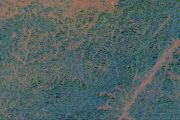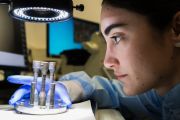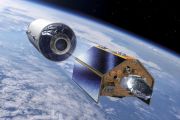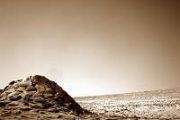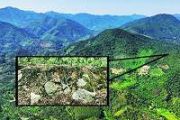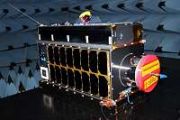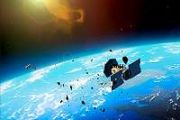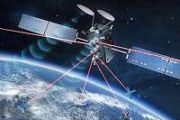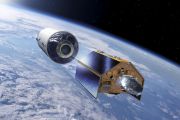
Copernical Team
Atmospheric Waves Experiment launching to space station to study atmospheric waves via airglow
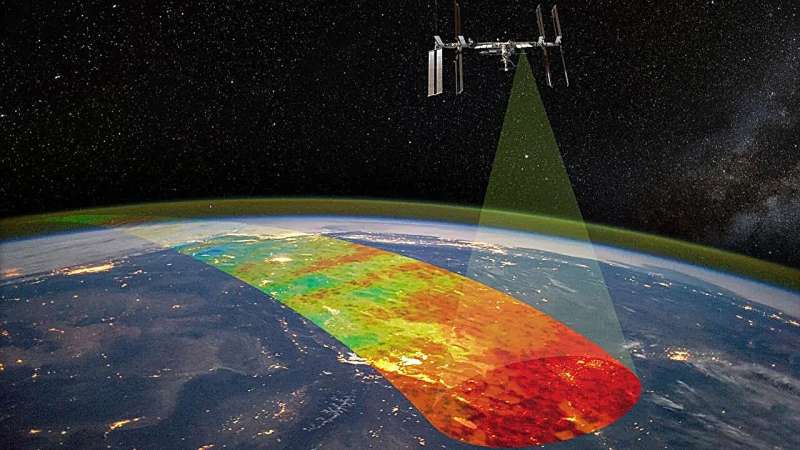
NASA's Atmospheric Waves Experiment, or AWE, mission is scheduled to launch to the International Space Station in November 2023, where it will make use of a natural, ethereal glow in Earth's sky to study waves in our planet's atmosphere.
Built by Utah State University's Space Dynamics Laboratory in North Logan, Utah, AWE will be mounted on the exterior of the space station.
Space is getting crowded with satellites and space junk. How do we avoid collisions?
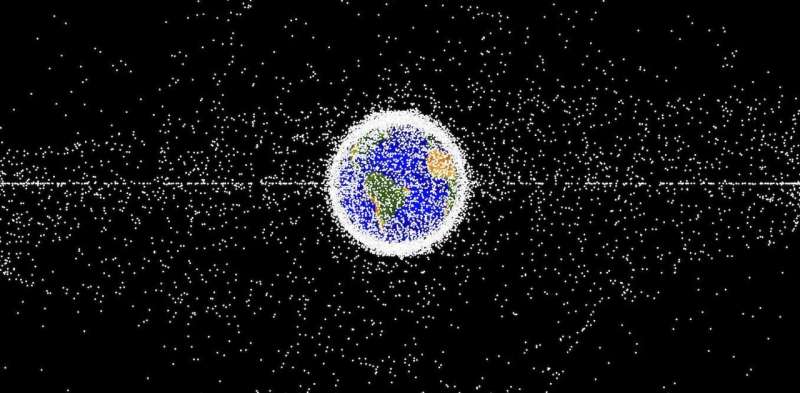
Reports this week suggest a near-collision between an Australian satellite and a suspected Chinese military satellite.
Meanwhile, earlier this month, the US government issued the first ever space junk fine. The Federal Communications Commission handed a US$150,000 penalty to the DISH Network, a publicly traded company providing satellite TV services.
It came as a surprise to many in the space industry, as the fine didn't relate to any recent debris—it was issued for a communications satellite that has been in space for more than 21 years. It was EchoStar-7, which failed to meet the orbit requirements outlined in a previously agreed debris mitigation plan.
The EchoStar-7 fine might be a US first, but it probably won't be the last. We are entering an unprecedented era of space use and can expect the number of active satellites in space to increase by 700% by the end of the decade.
As our local space gets more crowded, keeping an eye on tens of thousands of satellites and bits of space junk will only become more important.
QuickSounder Spacecraft contract awarded by NASA
 NASA, on behalf of NOAA, has awarded a delivery order under the Rapid Spacecraft Acquisition IV (Rapid-IV) contract to Southwest Research Institute of San Antonio for the QuickSounder spacecraft.
The firm-fixed-price delivery order covers all phases of QuickSounder's operations to include spacecraft development, integration of NOAA's Advanced Technology Microwave Sounder Engineering Develo
NASA, on behalf of NOAA, has awarded a delivery order under the Rapid Spacecraft Acquisition IV (Rapid-IV) contract to Southwest Research Institute of San Antonio for the QuickSounder spacecraft.
The firm-fixed-price delivery order covers all phases of QuickSounder's operations to include spacecraft development, integration of NOAA's Advanced Technology Microwave Sounder Engineering Develo High-resolution atmospheric modeling gets a boost with next-gen GEOS-Chem software
 In a significant leap forward for atmospheric science, researchers from Washington University's McKelvey School of Engineering have rolled out an advanced version of GEOS-Chem, known as High Performance GEOS-Chem. This next-generation software paves the way for researchers, policymakers, and citizen scientists to conduct highly detailed studies of air quality and greenhouse gases, using meteorol
In a significant leap forward for atmospheric science, researchers from Washington University's McKelvey School of Engineering have rolled out an advanced version of GEOS-Chem, known as High Performance GEOS-Chem. This next-generation software paves the way for researchers, policymakers, and citizen scientists to conduct highly detailed studies of air quality and greenhouse gases, using meteorol China discloses tasks of Shenzhou-17 crewed space mission
 The Shenzhou-17 astronauts will perform various in-orbit space science and application payload tests and experiments, a senior official from the China Manned Space Agency (CMSA) announced at a press conference on Wednesday.
They will carry out extravehicular activities (EVAs), install extravehicular payloads and conduct space station maintenance and other tasks, said Lin Xiqiang, deputy di
The Shenzhou-17 astronauts will perform various in-orbit space science and application payload tests and experiments, a senior official from the China Manned Space Agency (CMSA) announced at a press conference on Wednesday.
They will carry out extravehicular activities (EVAs), install extravehicular payloads and conduct space station maintenance and other tasks, said Lin Xiqiang, deputy di Tightbeam tech set to revolutionize Global Marine Internet through Aalyria-HICO Partnership
 Aalyria Technologies and HICO Investment Group are joining forces to revolutionize maritime communications, having recently signed a Memorandum of Understanding (MOU). The agreement sets forth the scope and aims of a partnership that seeks to introduce Aalyria's Tightbeam high-speed, free-space optics communications systems across the maritime sector in various global regions, including the Midd
Aalyria Technologies and HICO Investment Group are joining forces to revolutionize maritime communications, having recently signed a Memorandum of Understanding (MOU). The agreement sets forth the scope and aims of a partnership that seeks to introduce Aalyria's Tightbeam high-speed, free-space optics communications systems across the maritime sector in various global regions, including the Midd Terran Orbital awarded $4.7 Million Contract by European Space Agency
 Terran Orbital Corporation (NYSE: LLAP), a global leader in satellite-based solutions primarily serving the aerospace and defense industries, has announced its wholly-owned international subsidiary, Tyvak International s.r.l., has been chosen as a prime contractor under a $4.7 million or euro 4.5 million contract by the European Space Agency (ESA) for a proximity operations and in-orbit servici
Terran Orbital Corporation (NYSE: LLAP), a global leader in satellite-based solutions primarily serving the aerospace and defense industries, has announced its wholly-owned international subsidiary, Tyvak International s.r.l., has been chosen as a prime contractor under a $4.7 million or euro 4.5 million contract by the European Space Agency (ESA) for a proximity operations and in-orbit servici Sampling unique bedrock at the margin unit
 The Mars 2020 team has been exploring a new area of the Margin Unit at Jezero Crater, where distinct carbonate signatures have been observed from orbit. Importantly, carbonates that form in rocks can store a record of the climate during formation, and they can also preserve biosignatures (residues of ancient life).
Perseverance is on its way to a particularly interesting region of the Marg
The Mars 2020 team has been exploring a new area of the Margin Unit at Jezero Crater, where distinct carbonate signatures have been observed from orbit. Importantly, carbonates that form in rocks can store a record of the climate during formation, and they can also preserve biosignatures (residues of ancient life).
Perseverance is on its way to a particularly interesting region of the Marg Mystery of the Martian core solved
 For four years, NASA's InSight lander recorded tremors on Mars with its seismometer. Researchers at ETH Zurich collected and analysed the data transmitted to Earth to determine the planet's internal structure. "Although the mission ended in December 2022, we've now discovered something very interesting," says Amir Khan, a Senior Scientist in the Department of Earth Sciences at ETH Zurich.
For four years, NASA's InSight lander recorded tremors on Mars with its seismometer. Researchers at ETH Zurich collected and analysed the data transmitted to Earth to determine the planet's internal structure. "Although the mission ended in December 2022, we've now discovered something very interesting," says Amir Khan, a Senior Scientist in the Department of Earth Sciences at ETH Zurich. How could a piece of the Moon become a Near-Earth asteroid
 team of astronomers has found a new clue that a recently discovered near-Earth asteroid, Kamo`oalewa, might be a chunk of the moon. They hypothesized that the asteroid was ejected from the lunar surface during a meteorite strike-and they found that a rare pathway could have allowed Kamo`oalewa to get into orbit around the sun while remaining close to the orbits of the Earth and the Moon.
T
team of astronomers has found a new clue that a recently discovered near-Earth asteroid, Kamo`oalewa, might be a chunk of the moon. They hypothesized that the asteroid was ejected from the lunar surface during a meteorite strike-and they found that a rare pathway could have allowed Kamo`oalewa to get into orbit around the sun while remaining close to the orbits of the Earth and the Moon.
T 





